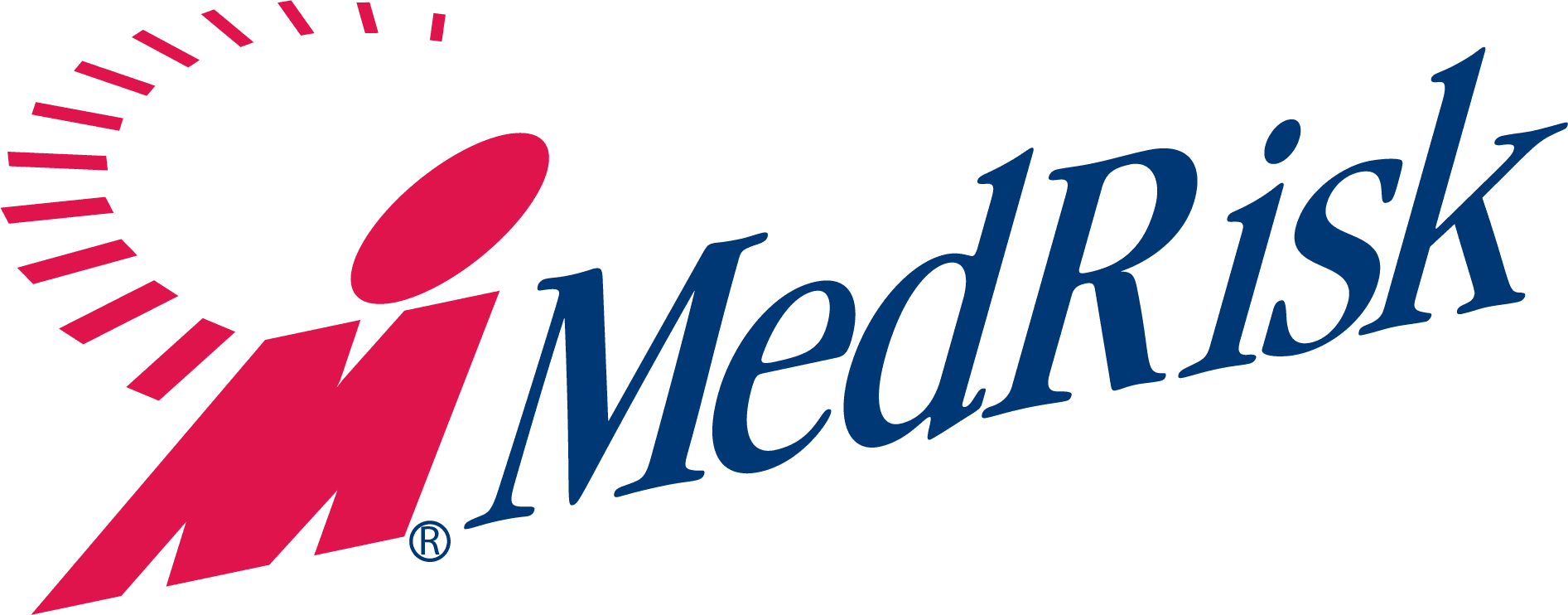INDUSTRY TRENDS REPORT
2018
OUTLOOK
MedRisk by the Numbers
MedRisk is the largest specialty managed care organization in the workers’ compensation industry
that is dedicated to physical rehabilitation.
264,548
TOTAL NETWORK PROVIDERS
100 %
U.S. BASED SERVICE MODEL
AVERAGE OF 4 HOURS TO SCHEDULING
97.7 %
OF NETWORK PROVIDERS AGREE WITH OUR CLINICAL RECOMMENDATIONS
2.6 DAYS TO INITIAL EVALUATION
516,757
INJURED WORKERS TREATED IN 2018
98.1 %
PATIENT SATISFACTION
The Shift in Managed Physical Medicine
For more than a decade, occupational injuries and overall workers’ compensation claim frequency have been on the decline—a development that has been attributed to a wide range of contributing factors, including advances in safety, automation and more. At the same time, there has been a steady increase in claims with PT involvement due in large part to mounting evidence that a PT-first approach can improve outcomes, is an effective alternative to opioids or surgery, and often results in fewer downstream costs. Specialty managed care programs with clinical expertise in the physical rehabilitation of injured workers will play an integral role in the future as employers, providers, claims administrators and insurers struggle to maintain focus on return-to-work goals in the face of varying treatment strategies.
%
Decrease in Occupational Injuries<br /> 2011 - 2017
%
Decrease in Claims Frequency 2011 - 2016
%
Increase in Claims with PT/OT<br /> 2011 - 2017
Carpal Tunnel Syndrome
TRENDING AT MEDRISK
The American Academy of Orthopaedic Surgeons (AAOS) approved new carpal tunnel syndrome performance measures in December of 2017 to be submitted to the U.S. Centers for Medicare & Medicaid Services (CMS) for consideration. The measures, which are based on a previously published AAOS Clinical Practice Guideline (CPG), discourage the routine use of occupational therapy (OT) or physical therapy (PT) after carpal tunnel release (CTR) surgery. In other words, each patient is different. Some patients will recover quickly with a home exercise program and some do better with in-clinic supervision and direction. Emerging technologies like telerehab may bridge the gap between in-clinic PT and home exercise with no supervision but it is still too early to tell. Today, MedRisk sees anywhere from 20-40% of post-surgical CTS cases.
Legislative Recap
MedRisk gathers the latest legislative and regulatory developments and challenges each quarter. Here is a full summary of significant movements in 2018 and the implications for 2019.
NY’s Revised Medical Fee Schedule
The New York Workers’ Compensation Bureau proposed a revised medical fee schedule and established a 30-day period to receive comments on October 3. Although the regulation has yet to be adopted at time of posting, it’s likely that the final rule will significantly increase regulatory rates for physical therapy, occupational therapy and chiropractic treatment. New York has not increased its medical fee schedule in 20 years.
MedRisk has analyzed the recently published draft regional conversion factors and individual CPT relative values and estimates that, if adopted, it would increase PT/OT fee schedule rates by 24% to 30% and chiropractic treatment fee schedule rates by 24% to 43% (depending on the applicable region).
WI Kills New Fee Schedule
The Wisconsin legislature declined to pass an agreed-upon bill proposed by the Wisconsin WC Advisory Council which would have adopted a fee schedule for medical services delivered to WC claimants. By tradition, bills drafted by the Advisory Council, composed of management and labor representatives, are passed without substantive amendments.
Although Wisconsin WC medical services are priced very high compared to other states, which is typical of charge-based systems in the six states without fee schedules, Wisconsin medical costs per claim are moderate because of low utilization. Consequently, business community support for a fee schedule has been tepid. Further, the proposed fee schedule mechanism, based on in-state average payments made by group health and self-insured health plans, appeared complex and expensive to create and maintain.
Wisconsin House Speaker Robin Vos was quoted as saying that the WC Advisory Committee’s bill was “dead on arrival.” It is unlikely that Wisconsin will attempt another run at establishing a WC fee schedule in the foreseeable future.
HB 558
Virginia enacted HB 558, which clarifies the appropriate regulatory rate to apply to services delivered by out-of-state providers. This legislation removes an ambiguity that previously existed in Virginia’s new fee schedule by establishing the methodology to follow in reviewing out-of-state providers’ bills, but it creates challenges for bill reviewers in identifying the factually appropriate in-state location for determining the correct fee schedule rate.
Electronic Billing
A number of states have moved to electronic billing and payment for health care services in 2018, including Virginia, Tennessee, Illinois and New Jersey. However, these new regulations differ considerably between regions. For example, payers and their designated agents are usually required to receive bills electronically if the provider transmits them electronically, but providers’ use of e-billing is voluntary in many jurisdictions, and exceptions exist for low-volume providers.
Further, some regulations apply to both e-billing and e-payment while others do not, e-bill processing time limits placed on payers vary state-to-state, and bill formatting standards differ (or, in the case of New Jersey, are non-existent).
The International Association of Industrial Accident Boards and Commissions (IAIABC) has strongly supported a uniform EDI bill format, but achievement of that goal has been elusive. The complexity of workers’ compensation and its state-by-state regulatory variability will likely create compliance challenges, at least in the short term.
OH Requires PT-First over Surgery
A recent study has persuaded the Ohio agency that oversees the workers’ compensation program to reject spinal fusion surgery and opioid prescriptions as an early response to back pain.
The change came about after research showed that spinal fusion surgery is “often ineffective,” and can lead to complications. In return, the complications may then result in increased opioid use. The state now requires workers with occupation-related back injuries to participate in a minimum of 60 days nonsurgical care – including physical therapy – while avoiding opioids.
Ohio is not the first state to diminish payments for surgery, however, they are the first to include a warning on the use of opioids. The 60-day approach is more aggressive than other states but is defended by the Ohio Bureau of Workers’ Compensation. This policy went into effect on January 1, 2018.
Early indication from MedRisk book-of-business data suggests that this policy may be making an impact.
CA Set to Adopt GPCIs
The California Division of Workers’ Compensation (DWC) has solicited a second round of stakeholder comments on its adoption of the 32-region Geographic Practice Cost Indices (GPCIs) used by Medicare as a way to provide greater sensitivity to local variations in the cost of medical care.
At the time of posting, the implementation date of the new Official Medical Fee Schedule is still open and may be postponed from the proposed January 1, 2019, to a later date, but the general direction taken by the DWC appears to have drawn only muted criticism from payers and is strongly supported by health care providers.
Although the shift to GPCIs represents a major shift in fee schedule methodology, the direct impact on California fee schedule rates is not that significant. A recent RAND study estimated that implementation of the GPCI methodology would result in modest decreases (1% – 5%) in the more rural, low-cost areas of the state and material increases (5% – 9%) only in Northern California areas encompassing San Francisco and Santa Clara. The Los Angeles area, which represents over 42% of California WC payments, would be relatively unaffected, with an increase of less than 1%.
NJ Enacts Electronic Billing
A number of states have moved to electronic billing and payment for health care services in 2018, including Virginia, Tennessee, Illinois and New Jersey. However, these new regulations differ considerably between regions. For example, payers and their designated agents are usually required to receive bills electronically if the provider transmits them electronically, but providers’ use of e-billing is voluntary in many jurisdictions, and exceptions exist for low-volume providers.
Further, some regulations apply to both e-billing and e-payment while others do not, e-bill processing time limits placed on payers vary state-to-state, and bill formatting standards differ (or, in the case of New Jersey, are non-existent).
The International Association of Industrial Accident Boards and Commissions (IAIABC) has strongly supported a uniform EDI bill format, but achievement of that goal has been elusive. The complexity of workers’ compensation and its state-by-state regulatory variability will likely create compliance challenges, at least in the short term.
IL Enacts Electronic Billing
A number of states have moved to electronic billing and payment for health care services in 2018, including Virginia, Tennessee, Illinois and New Jersey. However, these new regulations differ considerably between regions. For example, payers and their designated agents are usually required to receive bills electronically if the provider transmits them electronically, but providers’ use of e-billing is voluntary in many jurisdictions, and exceptions exist for low-volume providers.
Further, some regulations apply to both e-billing and e-payment while others do not, e-bill processing time limits placed on payers vary state-to-state, and bill formatting standards differ (or, in the case of New Jersey, are non-existent).
The International Association of Industrial Accident Boards and Commissions (IAIABC) has strongly supported a uniform EDI bill format, but achievement of that goal has been elusive. The complexity of workers’ compensation and its state-by-state regulatory variability will likely create compliance challenges, at least in the short term.
Research & Insights
Prior Trends Reports
2023
2022
2021
2019
2018
2017



